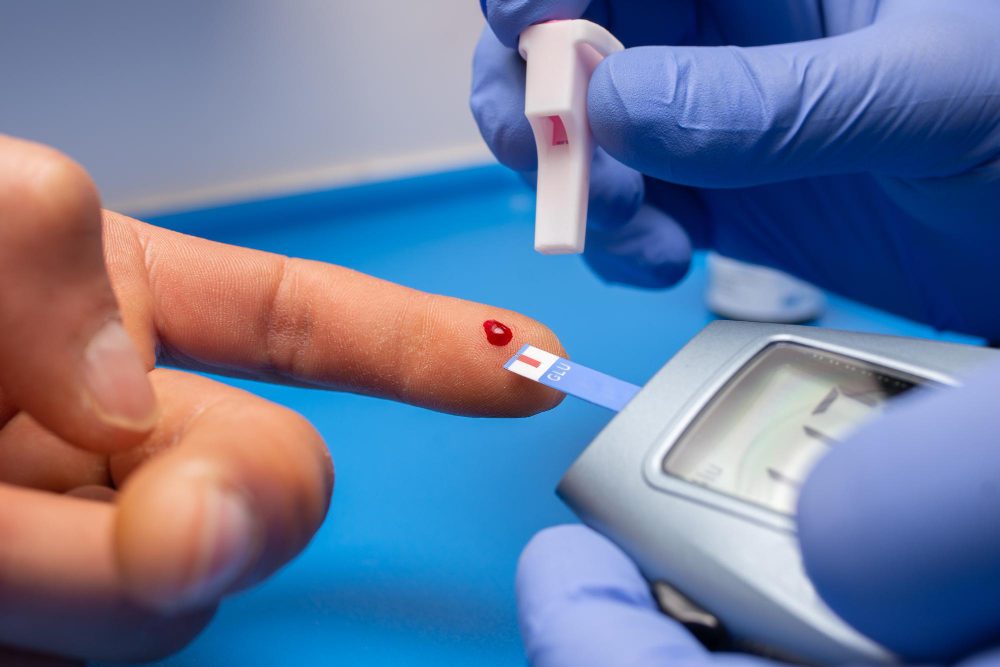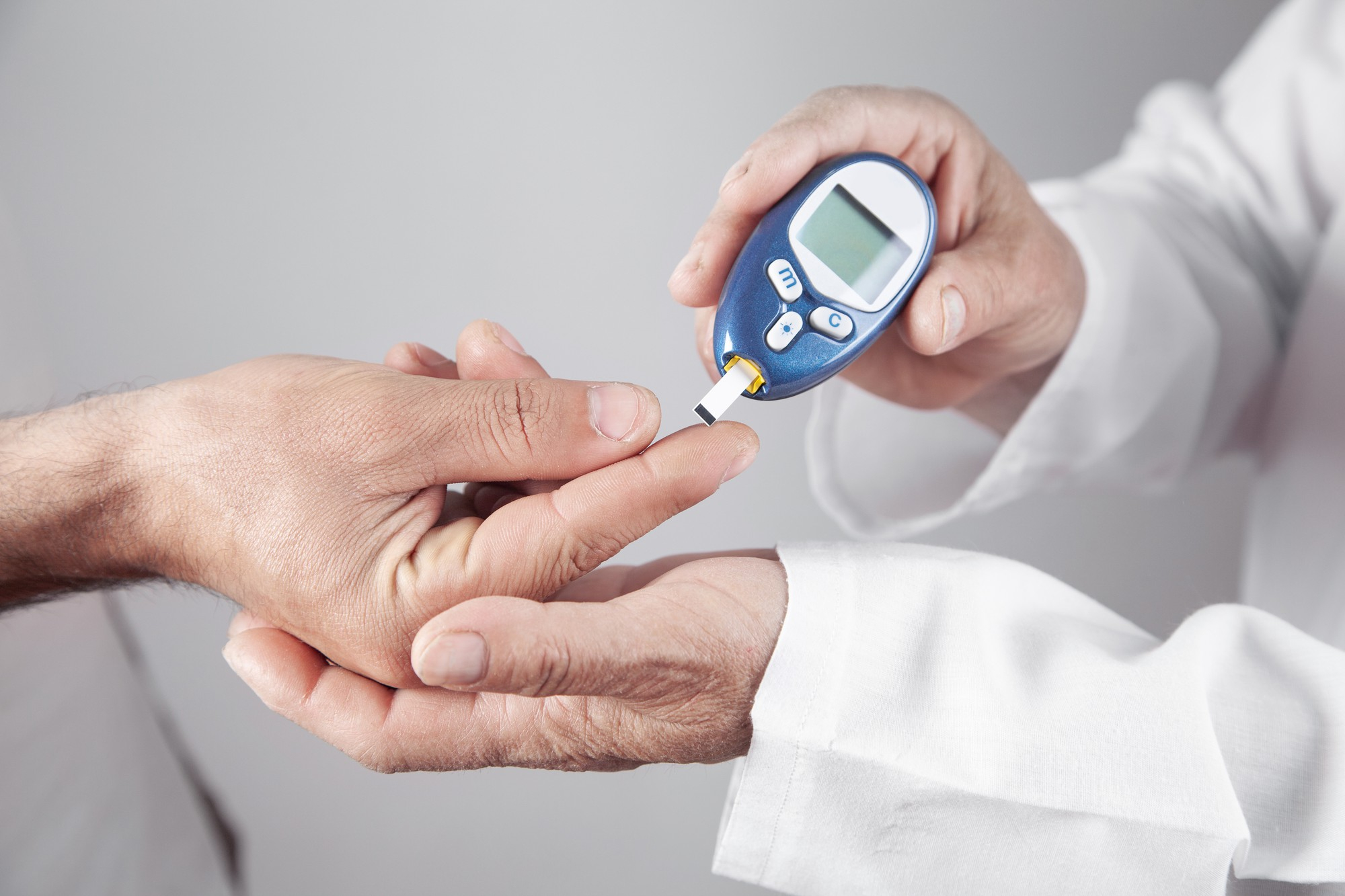Book Now
Diabetes Management

Diabetes Management
Diabetes is a chronic health condition that affects how an individual’s body uses glucose or blood sugar. The food you eat provides your body's cells with the essential energy source known as glucose. By enabling glucose to enter cells where it may be utilized for energy, the pancreatic hormone insulin aids in controlling the blood glucose level.
Symptoms
Diabetes symptoms vary depending on the kind and severity of the disease. Typical signs of diabetes include:
- Unexplained Weight Loss: Despite eating enough or even more than usual, people with diabetes may experience weight loss, as their body starts to break down muscle and fat for energy due to insufficient insulin or insulin resistance.
- Hunger: Even after eating, individuals with diabetes may still feel hungry due to the body's inability to properly use glucose for energy.
- Fatigue: High blood sugar levels might prevent the body from delivering glucose to the cells for energy, which makes you feel exhausted and sluggish.
- Blurred Vision: High blood sugar levels can make the lenses of the eyes enlarge, which causes vision to become blurry.
- Slow-Healing Wounds or Frequent Infections: Diabetes can impact the body's capacity to heal wounds and fight infections because it impairs immunological function and causes poor blood circulation.
- Darkened Skin in Certain Areas: Diabetes neuropathy, which frequently presents as tingling, numbness, or pain in the extremities, is caused by long-term nerve damage from high blood sugar levels.

Causes
When there’s too much glucose in the blood, it results in diabetes. However, the type of diabetes affects the cause of high blood sugar levels.
Causes of diabetes include:
- Insulin Resistance: Type 2 diabetes is primarily caused by insulin resistance. This happens when the cells in the muscles, fat, and liver don't react to insulin appropriately.
- Autoimmune Disease: The immune system of the body attacks and kills the pancreatic cells that make insulin in both type 1 diabetes and LADA.
- Hormonal Imbalances: When the placenta releases hormones that cause insulin resistance during pregnancy, hormonal imbalances can result in gestational diabetes. Acromegaly and Cushing’s syndrome are two hormone-related diseases that can result in Type 2 diabetes.
- Pancreatic Damage: Type 3c diabetes is caused by physical damage to the pancreas from a medical condition, injury, or surgery.
- Genetic Mutations: Genetic mutations are responsible for MODY and neonatal diabetes.

Complications
Diabetes can lead to various complications over time if not well-managed. Those include:
- Kidney Damage: Diabetes can damage the delicate filtering system in the kidneys, which can lead to kidney disease or kidney failure over time.
- Hearing Impairment: Diabetes may increase the risk of hearing problems due to nerve damage or poor blood flow to the inner ear.
- Nerve Damage: Long-term blood sugar elevations can harm nerves, especially in the hands and feet, and other extremities.
- Eye Damage: Blood vessels in the retina can be harmed by high blood sugar levels, which could result in vision issues or even blindness.
- Foot Problems: Diabetes can damage the nerves in the feet and create poor blood circulation, which can result in foot issues like ulcers, infections, and sluggish wound healing.
- Cardiovascular Disease: Cardiovascular issues including high blood pressure and arterial narrowing might also result from it.

Diagnosis
The treatment plan for diabetes greatly varies according to the type and severity of the disease. However, some common treatment approaches include:
- Blood Sugar Monitoring: Blood sugar levels can be checked through frequent finger stick tests using a glucose meter or by using a continuous glucose monitor (CGM). The ideal blood sugar range will be determined by you and your healthcare provider.
- Oral Diabetes Medications: For individuals whose body still produces some insulin, oral diabetes medications can greatly help control blood sugar levels.
- Insulin: Synthetic insulin is necessary for people with Type 1 diabetes to manage their condition and sustain life. Some people with Type 2 diabetes may also require insulin. Synthetic insulin comes in various types, each with different onset times and durations of effect.

Treatment
The treatment plan for diabetes greatly varies according to the type and severity of the disease. However, some common treatment approaches include:
- Blood Sugar Monitoring: Blood sugar levels can be checked through frequent finger stick tests using a glucose meter or by using a continuous glucose monitor (CGM). The ideal blood sugar range will be determined by you and your healthcare provider.
- Oral Diabetes Medications: For individuals whose body still produces some insulin, oral diabetes medications can greatly help control blood sugar levels.
- Insulin: Synthetic insulin is necessary for people with Type 1 diabetes to manage their condition and sustain life. Some people with Type 2 diabetes may also require insulin. Synthetic insulin comes in various types, each with different onset times and durations of effect.

Types of Diabetes
There are several types of diabetes, which includes:
- Type 2 Diabetes: This develops when your body either produces insufficient insulin or when your cells exhibit insulin resistance.
- Prediabetes: You may have prediabetes if your blood sugar levels are higher than normal but not yet at the level of type 2 diabetes. If you don't change your way of life, you could acquire Type 2 diabetes, which is a warning indication.
- Type 1 Diabetes: It is an autoimmune condition that targets and kills cells in the pancreas which are responsible for creating insulin. Type 1 diabetes is more likely to be developed in children and young adults.
- Type 3c Diabetes: This type occurs when the pancreas is damaged due to reasons other than an autoimmune reaction. This damage affects the pancreas's ability to produce insulin, leading to diabetes. Pancreatitis, pancreatic cancer, cystic fibrosis, hemochromatosis, and pancreatectomy can all cause Type 3c diabetes.
- Latent Autoimmune Diabetes in Adults (LADA): This type is similar to Type 1 diabetes, but it develops slowly and typically affects people over the age of 30.
- Maturity-Onset Diabetes of the Young (MODY): MODY is a monogenic form of diabetes caused by an inherited genetic mutation that affects how the body produces and uses insulin. There are more than 10 different types of MODY, and it affects up to 5% of people with diabetes. It often runs in families.
- Neonatal Diabetes: Within the first six months of birth, this rare type of diabetes develops. It may reappear later in life.
- Brittle Diabetes: It is characterized by severe episodes of high and low glucose levels. In rare cases, a pancreas transplant may be necessary to permanently treat brittle diabetes.

